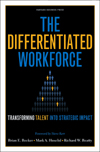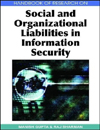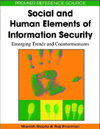Insights...News about faculty and their research
Smith studies online movie releases

Smith
Studios should decide when to release a movie online, in relation to home video release, based on its box-office success, according to research by Sanjukta Das Smith, assistant professor of management science and systems, recently published in the Journal of Organizational Computing and Electronic Commerce.
Releasing a movie online before its home-video release can greatly cut into a movie’s profits, as the home-video market is, on average, a movie’s highest revenue-generating source. However, if the online release is delayed too long, the studio runs the risk of pirated copies of the movie flooding the Internet.
By studying typical examples of movies based on their box-office performance, Smith concluded that a high-performing movie should be released online just prior to its home-video release, while the online release of an average or below-average movie should more closely coincide with its withdrawal from theaters.
A box-office hit is one that opens very strongly in the theaters and whose revenue-generating power remains sustained for a long period of time. If the studio released the movie online before its home-video release, it could jeopardize the revenue from its home-video sales.
Smith also concluded that average-performing movies should be released online just prior to being withdrawn from the theaters, while below-average movies should be released online during the last week of their stay in theaters. In both cases, the online release can precede the home-video release, because it is in the studios’ best interest to increase public awareness of movies that were not big hits.
The high cost of being poor

Talukdar
Higher prices for groceries in poor neighborhoods essentially levy a “ghetto tax” on people who are already disadvantaged, according to research by Debabrata Talukdar, associate professor of marketing in the School of Management.
Talukdar’s study used data from grocery stores in the Buffalo area, and found that everyday grocery items can cost 10 to 15 percent more in poor neighborhoods as compared to wealthier areas. “Even after controlling for store size and competition, prices are found to be 2 to 5 percent higher in poor areas,” he wrote.
There are several reasons for the price disparity, Talukdar found. First, stores in poor neighborhoods were more likely to be smaller and less cost-efficient, while larger chain stores were more predominant in wealthier suburbs.
But the most important factor was the lower level of car ownership in the poorer areas. This lack of transportation makes it more difficult for consumers to shop for the best prices. In wealthier areas, where car ownership is the norm, the ability to price shop leads to more competition and lower prices.
Talukdar found that moving the nearest chain store closer to a particular neighborhood store by only one mile can result in the neighborhood store dropping prices by 1 to 3 percent. By providing evidence of price disparities in poor versus wealthier areas, Talukdar hopes his findings will lead to further debate on how to relieve the price burden on poor households in inner-city neighborhoods.
New in print
Translating talent into strategic impact

The familiar bromides that “people are our most important asset” or “we are in a war for talent” highlight the importance of talent in an organization. But finding ways to translate those watchwords into strategic success continues to frustrate most companies.
A new book, The Differentiated Workforce: Translating Talent into Strategic Impact (April 2009, Harvard Business Press) co-authored by Brian E. Becker, senior associate dean and professor of organization and human resources in the School of Management, provides a novel solution to this problem and offers a step-by-step approach that is a must-read for both senior human resource professionals and line managers.
The book’s message is simple: If you differentiate on the outside (your business strategy), you also need to differentiate on the inside (your workforce strategy). A business strategy designed to build competitive advantage requires a workforce strategy uniquely designed to execute that business strategy.
J. Randall MacDonald, senior vice president, human resources, at IBM, can attest to the effectiveness of this strategy. “At IBM, we are successfully using the principles described in The Differentiated Workforce to drive strategic value creation,” he says.
Yet, as the book demonstrates, too many organizations rely on “best practices” and “me too” approaches when it comes to their workforce strategy. Adopting a differentiated workforce strategy means an organization will no longer just invest and manage “people,” but instead will disproportionately invest in strategic talent.
The book not only describes why a company needs to differentiate its workforce strategy, but as importantly how to do it. It refocuses conventional wisdom from a war for talent to a war with talent.
The authors demonstrate how to identify an organization’s “A” jobs based on an analysis of its strategic capabilities. Next, they show how to identify “A” players, and get those “A” players in the “A” jobs.
Differentiation means disproportionately focusing an organization’s HR system and line manager responsibility on employee performance in those “A” jobs.
“A differentiated workforce strategy is just as valuable in the current economic environment as it is in a period of growth,” according to co-author Mark A. Huselid. “Workforce reductions are always difficult decisions, but our approach can help identify the strategic talent that must be retained.”
The approach described in The Differentiated Workforce is the culmination of 20 years of academic research and real-world testing in hundreds of organizations. The authors are leading scholars who combine their research with years of experience as consultants and management educators. Becker’s co-authors Huselid and Richard W. Beatty are professors of human resources in the School of Management and Labor Relations at Rutgers, The State University of New Jersey.
Also new in print

Social and Organizational Liabilities in Information Security
Edited by Manish Gupta and Raj Sharman (Information Science Reference, 2009)
This book offers authoritative articles on the most salient contemporary issues of managing social and human aspects of information security. Aimed at providing immense scholarly value to researchers, academicians and practitioners in the area of information technology and security, this landmark reference collection provides estimable coverage of pertinent issues such as employee surveillance, information security policies and password authentication.

Social and Human Elements of Information Security: Emerging Trends and Countermeasures
Edited by Manish Gupta and Raj Sharman (Information Science Reference, 2009)
With insightful, high-quality research into the social and human aspects of information security, this book is a comprehensive source of the latest trends, issues and findings in the field. It was written to fill the gap in existing literature by bringing together the most recent work from researchers in the fast and evolving field of information security.
Suresh to serve as editor of new journal

Suresh
Nallan C. Suresh, UB Distinguished Professor and chair of the Department of Operations Management and Strategy in the School of Management, has been invited by the board of directors of the Decision Sciences Institute to serve as editor of the Buyer-Supplier Relationships Department of a new academic journal, Supply Chain Management Research, in the broad interdisciplinary area of supply chain management, to be published by John Wiley & Sons.
The mission of Supply Chain Management Research is to be the premier, scholarly research journal in supply chain management.
Contracts foster trust

Kishore
While detailed contracts can foster trust between parties, there needs to be flexibility in negotiating potential changes, according to research recently published in MIS Quarterly.
The study, funded by a National Science Foundation grant, focused on detailed contracts between IT outsourcing vendors and clients known as Service Level Agreements (SLAs), and was conducted by Rajiv Kishore, associate professor, and H. Raghav Rao, professor, both in the School of Management’s Department of Management Science and Systems, Jahyun Goo, MBA ’99, PhD ’03, assistant professor of management information systems at Florida Atlantic University, and Kichan Nam, PhD ’95, professor of management information systems at Sogang University in Seoul.

Rao
The authors expanded on previous research that provided initial evidence refuting the notion that contracts are antithetical to trust, and found that the more detailed the SLA, the greater the degree of trust and commitment between the two parties. This is because the very process of crafting detailed SLAs works to build and reinforce trust between clients and vendors. Also, both parties know what behaviors to expect from each other during the course of delivery on the outsourcing contract.
However, a unique insight provided by this study is that it is better to not be too specific in the SLA with respect to clauses that deal with anticipating and planning for contractual changes. Kishore says that “attempting to specify all potential changes and change processes through complex clauses in the contract only serves to tie the hands of the two parties behind their backs, and this may reduce the trust of the two parties in each other. He adds that “uncertainty is endemic to all contracts and contractual changes to deal with uncertainty can be most effectively implemented through an adaptive process of negotiation in which mutual give and take can occur across the table rather than through detailed, standardized clauses specified in the contract.”
Faculty lauded for accomplishments

Salamone
Two professors from the School of Management’s Department of Organization and Human Resources were honored by the University at Buffalo for their accomplishments in teaching and research. Joseph Salamone, associate professor, received the UB Teaching Innovation Award, and Darren Treadway, assistant professor, received the UB Young Investigator’s Award.

Treadway
In addition, the undergraduate Student Association at UB honored two School of Management adjunct faculty members. Elias Eldayrie, who teaches in the Department of Management Science and Systems, and Deborah Grossman, who teaches in the Department of Marketing, received Milton Plesur Excellence in Teaching Awards.
To warn or not to warn? Xu studies the question
Investors do not overreact to negative earnings warnings, according to research by Weihong Xu, assistant professor of accounting, recently published in the Journal of Business Finance & Accounting.
Xu studied nearly 600 firms that posted negative earnings and compared the one-year-ahead earnings of the firms that issued warnings to those that did not. The firms that did not issue warnings fared better, and those that did issue warnings experienced more severe declines than analysts previously expected.

Xu
Xu investigated whether the more severe decline was due to overreaction by investors, as past research has indicated, or if the market’s reaction was justified. She found that instead of the market irrationally penalizing companies that issue warnings, the declines are actually based on investors’ rational anticipation of more severe declines in future earnings.
According to Xu, greater declines occur because the companies that issue warnings are actually troubled companies, with more severe problems than the companies that did not issue warnings. The problems of the companies that issue warnings are more severe and long-term, as proven by their continued earnings declines. The market, therefore, reacts in a justified, rational way.
Managers can use this information to guide their disclosure policies. If a company is not in bad shape, it should not anticipate long-term negative consequences from issuing warnings. This may give managers greater confidence to be honest with investors, says Xu, instead of fearing that the market will penalize them for the warnings.
